Recent Advances in Our Understanding of Tropical Cyclone Intensity Change Processes from Airborne Observations
Abstract
:1. Introduction
- (a)
- Characterizing TC structure and its relationship to intensity change
- (b)
- TC intensification in vertical shear
- (c)
- Planetary boundary layer (PBL) processes and air–sea interaction
- (d)
- Upper-level warm core structure and evolution
- (e)
- Genesis and development of weak TCs
- (f)
- Secondary eyewall formation/eyewall replacement cycles (SEF/ERC)
2. Characterizing TC Structure and Its Relationship to Intensity Change
2.1. Characteristics of Inner-Core Structure
2.2. Response of TC Structure to Environmental Forcing
2.3. Relationship between TC Structure and Intensity Change
3. TC Intensification in Vertical Shear
3.1. Vortex Tilt and Precipitation Symmetry
3.2. Deep Convection and Eye-Eyewall Mixing
4. Planetary Boundary Layer (PBL) Processes and Air–Sea Interaction
4.1. Mean PBL Kinematic and Thermodynamic Structure
4.2. PBL Recovery in a Sheared Environment
4.3. Surface Exchange and PBL Mixing
4.4. Angular Momentum Convergence and PBL Spinup
5. Upper-Level Warm Core Structure and Evolution
6. Genesis and Development of Weak TCs
6.1. Tropical Cyclogenesis
6.2. Reformation
7. Secondary Eyewall Formation/Eyewall Replacement Cycles (SEF/ERC)
8. Challenges, Opportunities, and Future Directions
8.1. Observational Gaps
8.2. New Observing Technologies
8.3. Future Research Directions
9. Conclusions
Funding
Acknowledgments
Conflicts of Interest
References
- Cangialosi, J.P.; Blake, E.; DeMaria, M.; Penny, A.; Latto, A.; Rappaport, E.; Tallapragada, V. Recent Progress in Tropical Cyclone Intensity Forecasting at the National Hurricane Center. Weather. Forecast. 2020, 35, 1913–1922. [Google Scholar] [CrossRef]
- Elsberry, R.L.; Chen, L.; Davidson, J.; Rogers, R.F.; Wang, Y.; Wu, L. Advances In Understanding And Forecasting Rapidly Changing Phenomena In Tropical Cyclones. Trop. Cyc. Res. Rev. 2013, 2, 13–24. [Google Scholar]
- Rogers, R.; Aberson, S.; Aksoy, A.; Annane, B.; Black, M.; Cione, J.; Dorst, N.; Dunion, J.; Gamache, J.; Goldenberg, S.; et al. NOAA’S Hurricane Intensity Forecasting Experiment: A Progress Report. Bull. Am. Meteorol. Soc. 2013, 94, 859–882. [Google Scholar] [CrossRef] [Green Version]
- Kaplan, J.; DeMaria, M.; Knaff, J.A. A Revised Tropical Cyclone Rapid Intensification Index for the Atlantic and Eastern North Pacific Basins. Weather. Forecast. 2010, 25, 220–241. [Google Scholar] [CrossRef]
- Rogers, R.F.; Velden, C.S.; Zawislak, J.; Zhang, J.A. Tropical Cyclones and Hurricanes: Observations. In Reference Module in Earth Systems and Environmental Sciences; Elsevier: Amsterdam, The Netherlands, 2019; p. 25. [Google Scholar]
- Rogers, R.; Aberson, S.; Black, M.; Black, P.; Cione, J.; Dodge, P.; Dunion, J.; Gamache, J.; Kaplan, J.; Powell, M.; et al. The Intensity Forecasting Experiment: A NOAA Multiyear Field Program for Improving Tropical Cyclone Intensity Forecasts. Bull. Am. Meteorol. Soc. 2006, 87, 1523–1538. [Google Scholar] [CrossRef] [Green Version]
- Wick, G.A.; Dunion, J.P.; Black, P.G.; Walker, J.R.; Torn, R.D.; Kren, A.C.; Aksoy, A.; Christophersen, H.; Cucurull, L.; Dahl, B.; et al. NOAA’s Sensing Hazards with Operational Unmanned Technology (SHOUT) Experiment Observations and Forecast Impacts. Bull. Am. Meteorol. Soc. 2020, 101, E968–E987. [Google Scholar] [CrossRef] [Green Version]
- Zipser, E.J.; Twohy, C.H.; Tsay, S.-C.; Thornhill, K.L.; Tanelli, S.; Ross, R.; Krishnamurti, T.N.; Ji, Q.; Jenkins, G.; Ismail, S.; et al. The Saharan Air Layer and the Fate of African Easterly Waves—NASA’s AMMA Field Study of Tropical Cyclogenesis. Bull. Am. Meteorol. Soc. 2009, 90, 1137–1156. [Google Scholar] [CrossRef] [Green Version]
- Braun, S.A.; Kakar, R.; Zipser, E.; Heymsfield, G.; Albers, C.; Brown, S.; Durden, S.L.; Guimond, S.; Halverson, J.; Heymsfield, A.; et al. NASA’s Genesis and Rapid Intensification Processes (GRIP) Field Experiment. Bull. Am. Meteorol. Soc. 2013, 94, 345–363. [Google Scholar] [CrossRef]
- Braun, S.A.; Newman, P.A.; Heymsfield, G.M. NASA’s Hurricane and Severe Storm Sentinel (HS3) Investigation. Bull. Am. Meteorol. Soc. 2016, 97, 2085–2102. [Google Scholar] [CrossRef]
- Montgomery, M.T.; Davis, C.; Dunkerton, T.; Wang, Z.; Velden, C.; Torn, R.; Majumdar, S.J.; Zhang, F.; Smith, R.K.; Bosart, L.; et al. The Pre-Depression Investigation of Cloud-Systems in the Tropics (PREDICT) Experiment: Scientific Basis, New Analysis Tools, and Some First Results. Bull. Am. Meteorol. Soc. 2012, 93, 153–172. [Google Scholar] [CrossRef] [Green Version]
- Doyle, J.D.; Moskaitis, J.R.; Feldmeier, J.W.; Ferek, R.J.; Beaubien, M.; Bell, M.M.; Cecil, D.L.; Creasey, R.L.; Duran, P.; Elsberry, R.L.; et al. A View of Tropical Cyclones from Above: The Tropical Cyclone Intensity Experiment. Bull. Am. Meteorol. Soc. 2017, 98, 2113–2134. [Google Scholar] [CrossRef]
- D’Asaro, E.; Black, P.G.; Centurioni, L.R.; Chang, Y.-T.; Chen, S.S.; Foster, R.C.; Graber, H.C.; Harr, P.; Hormann, V.; Lien, R.-C.; et al. Impact of Typhoons on the Ocean in the Pacific. Bull. Am. Meteorol. Soc. 2014, 95, 1405–1418. [Google Scholar] [CrossRef]
- Wu, C.-C.; Lin, P.-H.; Aberson, S.; Yeh, T.-C.; Huang, W.-P.; Chou, K.-H.; Hong, J.-S.; Lu, G.-C.; Fong, C.-T.; Hsu, K.-C. Dropwindsonde Observations for Typhoon Surveillance near the Taiwan Region (DOTSTAR): An overview. Bull. Amer. Meteor. Soc. 2005, 86, 787–790. [Google Scholar]
- Chan, P.; Hon, K.; Foster, S. Wind data collected by a fixed-wing aircraft in the vicinity of a tropical cyclone over the south China coastal waters. Meteorol. Z. 2011, 20, 313–321. [Google Scholar] [CrossRef]
- Wong, W.K.; Tse, S.M.; Chan, P.W. Impacts of reconnaissance flight data on numerical simulation of tropical cyclones over South China Sea. Meteorol. Appl. 2013, 21, 831–847. [Google Scholar] [CrossRef] [Green Version]
- Lei, X.T.; Wong, W.K.; Fong, C. A Challenge of the Experiment on Typhoon Intensity Change in Coastal Area. Trop. Cyclone Res. Rev. 2017, 6, 94–97. [Google Scholar] [CrossRef]
- Ito, K.; Yamada, H.; Yamaguchi, M.; Nakazawa, T.; Nagahama, N.; Shimizu, K.; Ohigashi, T.; Shinoda, T.; Tsuboki, K. Analysis and Forecast Using Dropsonde Data from the Inner-Core Region of Tropical Cyclone Lan (2017) Obtained during the First Aircraft Missions of T-PARCII. SOLA 2018, 14, 105–110. [Google Scholar] [CrossRef] [Green Version]
- Aberson, S.D.; Cione, J.J.; Wu, C.-C.; Bell, M.M.; Halverson, J.; Fogarty, C.; Weissmann, M. Aircraft observations of tropical cyclones. In Global Perspectives on Tropical Cyclones: From Science to Mitigation; Chan, J.C.L., Kepert, J.D., Eds.; World Scientific: Singapore, 2010; pp. 227–240. [Google Scholar]
- Marks, F., Jr. Hurricanes: Observation. In Encyclopedia of Atmospheric Sciences, 2nd ed.; Elsevier: Amsterdam, The Netherlands, 2015; Volume 6, pp. 35–56. [Google Scholar]
- Rogers, R.; Lorsolo, S.; Reasor, P.; Gamache, J.; Marks, F. Multiscale Analysis of Tropical Cyclone Kinematic Structure from Airborne Doppler Radar Composites. Mon. Weather. Rev. 2012, 140, 77–99. [Google Scholar] [CrossRef]
- Marks, F.D.; Houze, R.A. Inner Core Structure of Hurricane Alicia from Airborne Doppler Radar Observations. J. Atmos. Sci. 1987, 44, 1296–1317. [Google Scholar] [CrossRef] [Green Version]
- Fischer, M.S.; Rogers, R.F.; Reasor, P.D.; Gamache, J. An Analysis of Tropical Cyclone Vortex and Convective Characteristics in Relation to Storm Intensity using a Novel Airborne Doppler Radar Database. Bull. Am. Meteorol. Soc. 2021, 87, 1503–1522, Manuscript in preparation. [Google Scholar]
- Stern, D.P.; Nolan, D.S. Reexamining the Vertical Structure of Tangential Winds in Tropical Cyclones: Observations and Theory. J. Atmos. Sci. 2009, 66, 3579–3600. [Google Scholar] [CrossRef] [Green Version]
- Hazelton, A.T.; Hart, R.E. Hurricane Eyewall Slope as Determined from Airborne Radar Reflectivity Data: Composites and Case Studies. Weather. Forecast. 2013, 28, 368–386. [Google Scholar] [CrossRef]
- Hazelton, A.T.; Rogers, R.; Hart, R.E. Shear-Relative Asymmetries in Tropical Cyclone Eyewall Slope. Mon. Weather. Rev. 2015, 143, 883–903. [Google Scholar] [CrossRef]
- Lorsolo, S.; Zhang, J.A.; Marks, F., Jr.; Gamache, J. Estimation and Mapping of Hurricane Turbulent Energy Using Airborne Doppler Measurements. Mon. Weather. Rev. 2010, 138, 3656–3670. [Google Scholar] [CrossRef]
- Creasey, R.L.; Elsberry, R.L. Tropical Cyclone Center Positions from Sequences of HDSS Sondes Deployed along High-Altitude Overpasses. Weather. Forecast. 2017, 32, 317–325. [Google Scholar] [CrossRef]
- Hendricks, E.A.; Elsberry, R.L.; Velden, C.S.; Jorgensen, A.C.; Jordan, M.S.; Creasey, R.L. Environmental Factors and Internal Processes Contributing to the Interrupted Rapid Decay of Hurricane Joaquin (2015). Weather. Forecast. 2018, 33, 1251–1262. [Google Scholar] [CrossRef]
- Reasor, P.D.; Rogers, R.; Lorsolo, S. Environmental Flow Impacts on Tropical Cyclone Structure Diagnosed from Airborne Doppler Radar Composites. Mon. Weather. Rev. 2013, 141, 2949–2969. [Google Scholar] [CrossRef]
- Dehart, J.C.; Houze, R.A., Jr.; Rogers, R.F. Quadrant Distribution of Tropical Cyclone Inner-Core Kinematics in Relation to Environmental Shear. J. Atmos. Sci. 2014, 71, 2713–2732. [Google Scholar] [CrossRef]
- Uhlhorn, E.W.; Klotz, B.W.; Vukicevic, T.; Reasor, P.D.; Rogers, R.F. Observed Hurricane Wind Speed Asymmetries and Relationships to Motion and Environmental Shear. Mon. Weather. Rev. 2014, 142, 1290–1311. [Google Scholar] [CrossRef]
- Zhang, J.A.; Dunion, J.P.; Nolan, D.S. In Situ Observations of the Diurnal Variation in the Boundary Layer of Mature Hurricanes. Geophys. Res. Lett. 2020, 47, 2019GL086206. [Google Scholar] [CrossRef]
- Dunion, J.P.; Thorncroft, C.D.; Velden, C.S. The Tropical Cyclone Diurnal Cycle of Mature Hurricanes. Mon. Weather. Rev. 2014, 142, 3900–3919. [Google Scholar] [CrossRef] [Green Version]
- Dunion, J.P.; Thorncroft, C.D.; Nolan, D.S. Tropical Cyclone Diurnal Cycle Signals in a Hurricane Nature Run. Mon. Weather. Rev. 2019, 147, 363–388. [Google Scholar] [CrossRef]
- Rogers, R.; Reasor, P.; Lorsolo, S. Airborne Doppler Observations of the Inner-Core Structural Differences between Intensifying and Steady-State Tropical Cyclones. Mon. Weather. Rev. 2013, 141, 2970–2991. [Google Scholar] [CrossRef]
- Rogers, R.F.; Reasor, P.D.; Zhang, J.A. Multiscale Structure and Evolution of Hurricane Earl (2010) during Rapid Intensification. Mon. Weather. Rev. 2015, 143, 536–562. [Google Scholar] [CrossRef]
- Rogers, R.F.; Reasor, P.D.; Zhang, J.A. Reply to “Comments on ‘Multiscale Structure and Evolution of Hurricane Earl (2010) during Rapid Intensification’”. Mon. Weather. Rev. 2017, 145, 1573–1575. [Google Scholar] [CrossRef]
- Susca-Lopata, G.; Zawislak, J.; Zipser, E.J.; Rogers, R.F. The Role of Observed Environmental Conditions and Precipitation Evolution in the Rapid Intensification of Hurricane Earl (2010). Mon. Weather. Rev. 2015, 143, 2207–2223. [Google Scholar] [CrossRef]
- Nolan, D.S.; Moon, Y.; Stern, D.P. Tropical Cyclone Intensification from Asymmetric Convection: Energetics and Efficiency. J. Atmos. Sci. 2007, 64, 3377–3405. [Google Scholar] [CrossRef]
- Pendergrass, A.G.; Willoughby, H.E. Diabatically Induced Secondary Flows in Tropical Cyclones. Part I: Quasi-Steady Forcing. Mon. Weather. Rev. 2009, 137, 805–821. [Google Scholar] [CrossRef] [Green Version]
- Schubert, W.H.; Hack, J.J. Inertial Stability and Tropical Cyclone Development. J. Atmos. Sci. 1982, 39, 1687–1697. [Google Scholar] [CrossRef]
- Vigh, J.L.; Schubert, W.H. Rapid Development of the Tropical Cyclone Warm Core. J. Atmos. Sci. 2009, 66, 3335–3350. [Google Scholar] [CrossRef] [Green Version]
- Montgomery, M.T.; Zhang, J.A.; Smith, R.K. An analysis of the observed low-level structure of rapidly intensifying and mature hurricane Earl (2010). Q. J. R. Meteorol. Soc. 2014, 140, 2132–2146. [Google Scholar] [CrossRef] [Green Version]
- Smith, R.K.; Montgomery, M.T. The efficiency of diabatic heating and tropical cyclone intensification. Q. J. R. Meteorol. Soc. 2016, 142, 2081–2086. [Google Scholar] [CrossRef]
- Smith, R.K.; Montgomery, M.T.; Van Sang, N. Tropical cyclone spin-up revisited. Q. J. R. Meteorol. Soc. 2009, 135, 1321–1335. [Google Scholar] [CrossRef] [Green Version]
- Stevenson, S.N.; Corbosiero, K.L.; DeMaria, M.; Vigh, J.L. A 10-Year Survey of Tropical Cyclone Inner-Core Lightning Bursts and Their Relationship to Intensity Change. Weather. Forecast. 2017, 33, 23–36. [Google Scholar] [CrossRef]
- Vigh, J.L.; Dorst, N.M.; Williams, C.L.; Stern, D.P.; Uhlhorn, E.W.; Klotz, B.W.; Martinez, J.; Willoughby, H.E. FLIGHT+: The Extended Flight Level Dataset for Tropical Cyclones; Tropical Cyclone Data Project, National Center for Atmospheric Research, Research Applications Laboratory: Boulder, CO, USA, 2016; Available online: http://0-dx-doi-org.brum.beds.ac.uk/10.5065/D6WS8R93 (accessed on 17 May 2021).
- Price, C.; Asfur, M.; Yair, Y. Maximum hurricane intensity preceded by increase in lightning frequency. Nat. Geosci. 2009, 2, 329–332. [Google Scholar] [CrossRef]
- Martinez, J.; Bell, M.M.; Vigh, J.L.; Rogers, R.F. Examining Tropical Cyclone Structure and Intensification with the FLIGHT+ Dataset from 1999 to 2012. Mon. Weather. Rev. 2017, 145, 4401–4421. [Google Scholar] [CrossRef] [Green Version]
- Rogers, R.F.; Aberson, S.; Bell, M.M.; Cecil, D.J.; Doyle, J.D.; Kimberlain, T.B.; Morgerman, J.; Shay, L.K.; Velden, C. Rewriting the Tropical Record Books: The Extraordinary Intensification of Hurricane Patricia (2015). Bull. Am. Meteorol. Soc. 2017, 98, 2091–2112. [Google Scholar] [CrossRef]
- Martinez, J.; Bell, M.M.; Rogers, R.F.; Doyle, J.D. Axisymmetric Potential Vorticity Evolution of Hurricane Patricia (2015). J. Atmos. Sci. 2019, 76, 2043–2063. [Google Scholar] [CrossRef] [Green Version]
- Guimond, S.R.; Heymsfield, G.M.; Turk, F.J. Multiscale Observations of Hurricane Dennis (2005): The Effects of Hot Towers on Rapid Intensification. J. Atmos. Sci. 2010, 67, 633–654. [Google Scholar] [CrossRef]
- Rios-Berrios, R.; Torn, R.D. Climatological Analysis of Tropical Cyclone Intensity Changes under Moderate Vertical Wind Shear. Mon. Weather. Rev. 2017, 145, 1717–1738. [Google Scholar] [CrossRef]
- Bhatia, K.T.; Nolan, D.S. Relating the Skill of Tropical Cyclone Intensity Forecasts to the Synoptic Environment. Weather. Forecast. 2013, 28, 961–980. [Google Scholar] [CrossRef]
- Zhang, F.; Tao, D. Effects of Vertical Wind Shear on the Predictability of Tropical Cyclones. J. Atmos. Sci. 2013, 70, 975–983. [Google Scholar] [CrossRef]
- Sumwalt, R.L., III; Hart, C.A.; Weener, E.F.; Dinh-Zahr, T.B. Safety Recommendation Report: Tropical Cyclone Information for Mariners; Technical Report MSR-17/02; National Transportation Safety Board: Washington, DC, USA, 2017; p. 21. Available online: https://www.ntsb.gov/investigations/AccidentReports/Reports/MSR1702.pdf (accessed on 17 May 2021).
- Alvey, G.A.; Fischer, M.S.; Reasor, P.D.; Rogers, R.F.; Zawislak, J.A. Processes underlying the Vortex Repositioning during Dorian’s (2019) Early Stages that increased its favorability for Rapid Intensification. Mon. Weather. Rev. 2021. in review. [Google Scholar]
- Jiang, H. The Relationship between Tropical Cyclone Intensity Change and the Strength of Inner-Core Convection. Mon. Weather. Rev. 2012, 140, 1164–1176. [Google Scholar] [CrossRef]
- Nguyen, L.T.; Rogers, R.F.; Reasor, P.D. Thermodynamic and Kinematic Influences on Precipitation Symmetry in Sheared Tropical Cyclones: Bertha and Cristobal (2014). Mon. Weather. Rev. 2017, 145, 4423–4446. [Google Scholar] [CrossRef]
- Black, M.L.; Gamache, J.F.; Marks, F.D.; Samsury, C.E.; Willoughby, H.E. Eastern Pacific Hurricanes Jimena of 1991 and Olivia of 1994: The Effect of Vertical Shear on Structure and Intensity. Mon. Weather. Rev. 2002, 130, 2291–2312. [Google Scholar] [CrossRef]
- Corbosiero, K.L.; Molinari, J. The Relationship between Storm Motion, Vertical Wind Shear, and Convective Asymmetries in Tropical Cyclones. J. Atmos. Sci. 2003, 60, 366–376. [Google Scholar] [CrossRef]
- Reasor, P.D.; Eastin, M.D. Rapidly Intensifying Hurricane Guillermo (1997). Part II: Resilience in Shear. Mon. Weather. Rev. 2012, 140, 425–444. [Google Scholar] [CrossRef]
- Rogers, R.; Chen, S.; Tenerelli, J.; Willoughby, H. A Numerical Study of the Impact of Vertical Shear on the Distribution of Rainfall in Hurricane Bonnie (1998). Mon. Weather. Rev. 2003, 131, 1577–1599. [Google Scholar] [CrossRef]
- Zawislak, J.; Jiang, H.; Alvey, G.R.; Zipser, E.J.; Rogers, R.F.; Zhang, J.A.; Stevenson, S.N. Observations of the Structure and Evolution of Hurricane Edouard (2014) during Intensity Change. Part I: Relationship between the Thermodynamic Structure and Precipitation. Mon. Weather. Rev. 2016, 144, 3333–3354. [Google Scholar] [CrossRef]
- Reasor, P.D.; Eastin, M.D.; Gamache, J.F. Rapidly Intensifying Hurricane Guillermo (1997). Part I: Low-Wavenumber Structure and Evolution. Mon. Weather. Rev. 2009, 137, 603–631. [Google Scholar] [CrossRef]
- Rogers, R.F.; Zhang, J.A.; Zawislak, J.; Jiang, H.; Alvey, G.R.; Zipser, E.J.; Stevenson, S.N. Observations of the Structure and Evolution of Hurricane Edouard (2014) during Intensity Change. Part II: Kinematic Structure and the Distribution of Deep Convection. Mon. Weather. Rev. 2016, 144, 3355–3376. [Google Scholar] [CrossRef]
- Wadler, J.B.; Rogers, R.F.; Reasor, P.D. The Relationship between Spatial Variations in the Structure of Convective Bursts and Tropical Cyclone Intensification as Determined by Airborne Doppler Radar. Mon. Weather. Rev. 2018, 146, 761–780. [Google Scholar] [CrossRef]
- Guimond, S.R.; Heymsfield, G.M.; Reasor, P.D.; Didlake, J.A.C. The Rapid Intensification of Hurricane Karl (2010): New Remote Sensing Observations of Convective Bursts from the Global Hawk Platform. J. Atmos. Sci. 2016, 73, 3617–3639. [Google Scholar] [CrossRef] [PubMed]
- Li, L.; Heymsfield, G.; Carswell, J.; Schaubert, D.H.; McLinden, M.L.; Creticos, J.; Perrine, M.; Coon, M.; Cervantes, J.I.; Vega, M.; et al. The NASA High-Altitude Imaging Wind and Rain Airborne Profiler. IEEE Trans. Geosci. Remote. Sens. 2015, 54, 298–310. [Google Scholar] [CrossRef]
- Brown, S.T.; Lambrigtsen, B.; Denning, R.F.; Gaier, T.; Kangaslahti, P.; Lim, B.H.; Tanabe, J.M.; Tanner, A.B. The High-Altitude MMIC Sounding Radiometer for the Global Hawk Unmanned Aerial Vehicle: Instrument Description and Performance. IEEE Trans. Geosci. Remote. Sens. 2011, 49, 3291–3301. [Google Scholar] [CrossRef]
- Guimond, S.R.; Reasor, P.D.; Heymsfield, G.M.; McLinden, M.M. The Dynamics of Vortex Rossby Waves and Secondary Eyewall Development in Hurricane Matthew (2016): New Insights from Radar Measurements. J. Atmos. Sci. 2020, 77, 2349–2374. [Google Scholar] [CrossRef]
- Bryan, G.H. Effects of Surface Exchange Coefficients and Turbulence Length Scales on the Intensity and Structure of Numerically Simulated Hurricanes. Mon. Weather. Rev. 2012, 140, 1125–1143. [Google Scholar] [CrossRef] [Green Version]
- Cione, J.J.; Kalina, E.A.; Zhang, J.A.; Uhlhorn, E.W. Observations of Air–Sea Interaction and Intensity Change in Hurricanes. Mon. Weather. Rev. 2013, 141, 2368–2382. [Google Scholar] [CrossRef]
- Emanuel, K.A. Sensitivity of Tropical Cyclones to Surface Exchange Coefficients and a Revised Steady-State Model incorporating Eye Dynamics. J. Atmos. Sci. 1995, 52, 3969–3976. [Google Scholar] [CrossRef] [Green Version]
- Kilroy, G.; Smith, R.K.; Montgomery, M.T. Why Do Model Tropical Cyclones Grow Progressively in Size and Decay in Intensity after Reaching Maturity? J. Atmos. Sci. 2016, 73, 487–503. [Google Scholar] [CrossRef]
- Ooyama, K. Numerical Simulation of the Life Cycle of Tropical Cyclones. J. Atmos. Sci. 1969, 26, 3–40. [Google Scholar] [CrossRef]
- Zhang, J.A.; Rogers, R.F.; Nolan, D.S.; Marks, F.D., Jr. On the characteristic height scales of the hurricane boundary layer. Mon. Weather Rev. 2011, 139, 2523–2535. [Google Scholar] [CrossRef]
- Zhang, J.A.; Drennan, W.M.; Black, P.G.; French, J.R. Turbulence Structure of the Hurricane Boundary Layer between the Outer Rainbands. J. Atmos. Sci. 2009, 66, 2455–2467. [Google Scholar] [CrossRef]
- Ming, J.; Zhang, J.A.; Rogers, R.F. Typhoon kinematic and thermodynamic boundary layer structure from dropsonde composites. J. Geophys. Res. Atmos. 2015, 120, 3158–3172. [Google Scholar] [CrossRef]
- Ahern, K.; Bourassa, M.A.; Hart, R.E.; Zhang, J.A.; Rogers, R.F. Observed Kinematic and Thermodynamic Structure in the Hurricane Boundary Layer during Intensity Change. Mon. Weather. Rev. 2019, 147, 2765–2785. [Google Scholar] [CrossRef]
- Zhang, J.A.; Rogers, R.F.; Reasor, P.D.; Uhlhorn, E.W.; Marks, F.D., Jr. Asymmetric Hurricane Boundary Layer Structure from Dropsonde Composites in Relation to the Environmental Vertical Wind Shear. Mon. Weather. Rev. 2013, 141, 3968–3984. [Google Scholar] [CrossRef]
- Molinari, J.; Frank, J.; Vollaro, D. Convective Bursts, Downdraft Cooling, and Boundary Layer Recovery in a Sheared Tropical Storm. Mon. Weather. Rev. 2013, 141, 1048–1060. [Google Scholar] [CrossRef]
- Nguyen, L.T.; Rogers, R.; Zawislak, J.; Zhang, J.A. Assessing the Influence of Convective Downdrafts and Surface Enthalpy Fluxes on Tropical Cyclone Intensity Change in Moderate Vertical Wind Shear. Mon. Weather. Rev. 2019, 147, 3519–3534. [Google Scholar] [CrossRef]
- Wadler, J.B.; Zhang, J.A.; Jaimes, B.; Shay, L.K. Downdrafts and the Evolution of Boundary Layer Thermodynamics in Hurricane Earl (2010) before and during Rapid Intensification. Mon. Weather. Rev. 2018, 146, 3545–3565. [Google Scholar] [CrossRef]
- Wadler, J.B.; Zhang, J.A.; Rogers, R.F.; Jaimes, B.; Shay, L.K. The Rapid Intensification of Hurricane Michael (2018): Storm Structure and the Relationship to Environmental and Air–Sea Interactions. Mon. Weather. Rev. 2021, 149, 245–267. [Google Scholar] [CrossRef]
- Jaimes, B.; Shay, L.K.; Uhlhorn, E.W. Enthalpy and Momentum Fluxes during Hurricane Earl Relative to Underlying Ocean Features. Mon. Weather. Rev. 2015, 143, 111–131. [Google Scholar] [CrossRef]
- Emanuel, K.A. An air–sea interaction theory for tropical cyclones. Part I: Steady-state maintenance. J. Atmos. Sci. 1986, 43, 585–604. [Google Scholar] [CrossRef]
- Malkus, J.S.; Riehl, H. On the dynamics and energy transformations in steady-state hurricanes. Tellus 1960, 12, 1–20. [Google Scholar] [CrossRef] [Green Version]
- Powell, M.D.; Vickery, P.J.; Reinhold, T.A. Reduced drag coefficient for high wind speeds in tropical cyclones. Nat. Cell Biol. 2003, 422, 279–283. [Google Scholar] [CrossRef]
- Vickery, P.J.; Wadhera, D.; Powell, M.D.; Chen, Y. A Hurricane Boundary Layer and Wind Field Model for Use in Engineering Applications. J. Appl. Meteorol. Clim. 2009, 48, 381–405. [Google Scholar] [CrossRef]
- Donelan, M.A.; Haus, B.K.; Reul, N.; Plant, W.J.; Stiassnie, M.; Graber, H.C.; Brown, O.B.; Saltzman, E.S. On the limiting aerodynamic roughness of the ocean in very strong winds. Geophys. Res. Lett. 2004, 31, L18306. [Google Scholar] [CrossRef] [Green Version]
- Haus, B.K.; Jeong, D.; Donelan, M.A.; Zhang, J.A.; Savelyev, I. Relative rates of sea-air heat transfer and frictional drag in very high winds. Geophys. Res. Lett. 2010, 37, 07802. [Google Scholar] [CrossRef]
- Zhang, J.A.; Black, P.G.; French, J.R.; Drennan, W.M. First direct measurements of enthalpy flux in the hurricane boundary layer: The CBLAST results. Geophys. Res. Lett. 2008, 35. [Google Scholar] [CrossRef] [Green Version]
- Black, P.G.; D’Asaro, E.A.; Drennan, W.M.; French, J.R.; Niiler, P.P.; Sanford, T.B.; Terrill, E.J.; Walsh, E.J.; Zhang, J.A. Air–Sea Exchange in Hurricanes: Synthesis of Observations from the Coupled Boundary Layer Air–Sea Transfer Experiment. Bull. Am. Meteorol. Soc. 2007, 88, 357–374. [Google Scholar] [CrossRef] [Green Version]
- Drennan, W.M.; Zhang, J.A.; French, J.R.; McCormick, C.; Black, P.G. Turbulent Fluxes in the Hurricane Boundary Layer. Part II: Latent Heat Flux. J. Atmos. Sci. 2007, 64, 1103–1115. [Google Scholar] [CrossRef] [Green Version]
- French, J.R.; Drennan, W.M.; Zhang, J.A.; Black, P.G. Turbulent Fluxes in the Hurricane Boundary Layer. Part I: Momentum Flux. J. Atmos. Sci. 2007, 64, 1089–1102. [Google Scholar] [CrossRef] [Green Version]
- Bell, M.M.; Montgomery, M.T.; Emanuel, K.A. Air–Sea Enthalpy and Momentum Exchange at Major Hurricane Wind Speeds Observed during CBLAST. J. Atmos. Sci. 2012, 69, 3197–3222. [Google Scholar] [CrossRef]
- Zhang, J.A.; Marks, F.D.; Montgomery, M.T.; Lorsolo, S. An Estimation of Turbulent Characteristics in the Low-Level Region of Intense Hurricanes Allen (1980) and Hugo (1989). Mon. Weather. Rev. 2011, 139, 1447–1462. [Google Scholar] [CrossRef] [Green Version]
- Zhang, J.A.; Drennan, W.M. An Observational Study of Vertical Eddy Diffusivity in the Hurricane Boundary Layer. J. Atmos. Sci. 2012, 69, 3223–3236. [Google Scholar] [CrossRef]
- Gopalakrishnan, S.G.; Marks, F.D.; Zhang, J.A.; Zhang, X.; Bao, J.-W.; Tallapragada, V. A Study of the Impacts of Vertical Diffusion on the Structure and Intensity of the Tropical Cyclones Using the High-Resolution HWRF System. J. Atmos. Sci. 2013, 70, 524–541. [Google Scholar] [CrossRef]
- Zhang, J.A.; Nolan, D.S.; Rogers, R.F.; Tallapragada, V. Evaluating the Impact of Improvements in the Boundary Layer Parameterization on Hurricane Intensity and Structure Forecasts in HWRF. Mon. Weather. Rev. 2015, 143, 3136–3155. [Google Scholar] [CrossRef]
- Zhang, J.A.; Rogers, R.F.; Tallapragada, V. Impact of Parameterized Boundary Layer Structure on Tropical Cyclone Rapid Intensification Forecasts in HWRF. Mon. Weather. Rev. 2017, 145, 1413–1426. [Google Scholar] [CrossRef]
- Zhang, J.A.; Rogers, R.F. Effects of Parameterized Boundary Layer Structure on Hurricane Rapid Intensification in Shear. Mon. Weather. Rev. 2019, 147, 853–871. [Google Scholar] [CrossRef]
- Zhang, J.A.; Montgomery, M.T. Observational Estimates of the Horizontal Eddy Diffusivity and Mixing Length in the Low-Level Region of Intense Hurricanes. J. Atmos. Sci. 2012, 69, 1306–1316. [Google Scholar] [CrossRef] [Green Version]
- Zhang, J.A.; Marks, F.D. Effects of Horizontal Diffusion on Tropical Cyclone Intensity Change and Structure in Idealized Three-Dimensional Numerical Simulations. Mon. Weather. Rev. 2015, 143, 3981–3995. [Google Scholar] [CrossRef]
- Zhang, J.A.; Marks, F.D.; Sippel, J.A.; Rogers, R.F.; Zhang, X.; Gopalakrishnan, S.G.; Zhang, Z.; Tallapragada, V. Evaluating the Impact of Improvement in the Horizontal Diffusion Parameterization on Hurricane Prediction in the Operational Hurricane Weather Research and Forecast (HWRF) Model. Weather. Forecast. 2018, 33, 317–329. [Google Scholar] [CrossRef]
- Montgomery, M.; Smith, R. Paradigms for tropical cyclone intensification. J. South. Hemisphere Earth Syst. Sci. 2014, 64, 37–66. [Google Scholar] [CrossRef]
- Smith, R.K.; Thomsen, G.L. Dependence of tropical-cyclone intensification on the boundary-layer representation in a numerical model. Q. J. R. Meteorol. Soc. 2010, 136, 1671–1685. [Google Scholar] [CrossRef]
- Zhang, J.; Kalina, E.; Biswas, M.; Rogers, R.; Zhu, P.; Marks, F. A Review and Evaluation of Planetary Boundary Layer Parameterizations in Hurricane Weather Research and Forecasting Model Using Idealized Simulations and Observations. Atmosphere 2020, 11, 1091. [Google Scholar] [CrossRef]
- Sanger, N.T.; Montgomery, M.T.; Smith, R.K.; Bell, M.M. An Observational Study of Tropical Cyclone Spinup in Supertyphoon Jangmi (2008) from 24 to 27 September. Mon. Weather. Rev. 2014, 142, 3–28. [Google Scholar] [CrossRef] [Green Version]
- Duran, P.; Molinari, J. Dramatic Inner-Core Tropopause Variability during the Rapid Intensification of Hurricane Patricia (2015). Mon. Weather. Rev. 2018, 146, 119–134. [Google Scholar] [CrossRef]
- Komaromi, W.A.; Doyle, J.D. Tropical Cyclone Outflow and Warm Core Structure as Revealed by HS3 Dropsonde Data. Mon. Weather. Rev. 2017, 145, 1339–1359. [Google Scholar] [CrossRef]
- Hendricks, E.A.; Montgomery, M.T.; Davis, C.A. The role of “vortical” hot towers in the formation of Tropical Cyclone Diana. J. Atmos. Sci. 2004, 1984, 1209–1232. [Google Scholar] [CrossRef] [Green Version]
- Montgomery, M.T.; Nicholls, M.E.; Cram, T.A.; Saunders, A.B. A Vortical Hot Tower Route to Tropical Cyclogenesis. J. Atmos. Sci. 2006, 63, 355–386. [Google Scholar] [CrossRef] [Green Version]
- Nguyen, S.V.; Smith, K.R.; Montgomery, T.M. Tropical cyclone intensification and predictability in three dimensions. Q. J. R. Meteorol. Soc. 2008, 134, 563–582. [Google Scholar]
- Reasor, P.D.; Montgomery, M.T.; Bosart, L.F. Mesoscale Observations of the Genesis of Hurricane Dolly (1996). J. Atmos. Sci. 2005, 62, 3151–3171. [Google Scholar] [CrossRef]
- Houze, R.A.; Lee, W.-C.; Bell, M.M. Convective Contribution to the Genesis of Hurricane Ophelia (2005). Mon. Weather. Rev. 2009, 137, 2778–2800. [Google Scholar] [CrossRef]
- Bell, M.M.; Montgomery, M.T. Sheared deep vortical convection in pre-depression Hagupit during TCS08. Geophys. Res. Lett. 2010, 37, 5. [Google Scholar] [CrossRef] [Green Version]
- Raymond, D.J.; Sessions, S.L.; Carrillo, C.L. Thermodynamics of tropical cyclogenesis in the northwest Pacific. J. Geophys. Res. Space Phys. 2011, 116. [Google Scholar] [CrossRef] [Green Version]
- Raymond, D.J.; Carrillo, C.L. The vorticity budget of developing typhoon Nuri (2008). Atmos. Chem. Phys. Discuss. 2011, 11, 147–163. [Google Scholar] [CrossRef] [Green Version]
- Gjorgjievska, S.; Raymond, D.J. Interaction between dynamics and thermodynamics during tropical cyclogenesis. Atmos. Chem. Phys. Discuss. 2014, 14, 3065–3082. [Google Scholar] [CrossRef] [Green Version]
- Raymond, D.; Gjorgjievska, S.; Sessions, S.; Fuchs, K. Tropical cyclogenesis and mid-level vorticity. J. South. Hemisphere Earth Syst. Sci. 2014, 64, 11–25. [Google Scholar] [CrossRef]
- Bell, M.M.; Montgomery, M.T. Mesoscale processes during the genesis of Hurricane Karl. J. Atmos. Sci. 2019, 76, 2235–2255. [Google Scholar] [CrossRef]
- Zawislak, J.; Zipser, E.J. Observations of Seven African Easterly Waves in the East Atlantic during 2006. J. Atmos. Sci. 2010, 67, 26–43. [Google Scholar] [CrossRef]
- Davis, C.A.; Ahijevych, D.A. Mesoscale Structural Evolution of Three Tropical Weather Systems Observed during PREDICT. J. Atmos. Sci. 2012, 69, 1284–1305. [Google Scholar] [CrossRef]
- Davis, C.A.; Ahijevych, D.A. Thermodynamic Environments of Deep Convection in Atlantic Tropical Disturbances. J. Atmos. Sci. 2013, 70, 1912–1928. [Google Scholar] [CrossRef]
- Helms, C.N.; Hart, R.E. The Evolution of Dropsonde-Derived Kinematic and Thermodynamic Structures in Developing and Nondeveloping Atlantic Tropical Convective Systems. Mon. Weather. Rev. 2015, 143, 3109–3135. [Google Scholar] [CrossRef]
- Komaromi, W.A. An Investigation of Composite Dropsonde Profiles for Developing and Nondeveloping Tropical Waves during the 2010 PREDICT Field Campaign. J. Atmos. Sci. 2013, 70, 542–558. [Google Scholar] [CrossRef]
- Smith, R.K.; Montgomery, M.T. Observations of the convective environment in developing and non-developing tropical disturbances. Q. J. R. Meteorol. Soc. 2012, 138, 1721–1739. [Google Scholar] [CrossRef] [Green Version]
- Zawislak, J.; Zipser, E.J. Analysis of the Thermodynamic Properties of Developing and Nondeveloping Tropical Disturbances Using a Comprehensive Dropsonde Dataset. Mon. Weather. Rev. 2014, 142, 1250–1264. [Google Scholar] [CrossRef]
- Brammer, A.; Thorncroft, C.D.; Dunion, J.P. Observations and Predictability of a Nondeveloping Tropical Disturbance over the Eastern Atlantic. Mon. Weather. Rev. 2018, 146, 3079–3096. [Google Scholar] [CrossRef]
- Penny, A.B.; Harr, P.A.; Bell, M.M. Observations of a Nondeveloping Tropical Disturbance in the Western North Pacific during TCS-08 (2008). Mon. Weather. Rev. 2015, 143, 2459–2484. [Google Scholar] [CrossRef] [Green Version]
- Molinari, J.; Vollaro, D. Rapid Intensification of a Sheared Tropical Storm. Mon. Weather. Rev. 2010, 138, 3869–3885. [Google Scholar] [CrossRef]
- Rogers, R.F.; Reasor, P.D.; Zawislak, J.A.; Nguyen, L.T. Precipitation Processes and Vortex Alignment during the Intensification of a Weak Tropical Cyclone in Moderate Vertical Shear. Mon. Weather. Rev. 2020, 148, 1899–1929. [Google Scholar] [CrossRef] [Green Version]
- Sitkowski, M.; Kossin, J.P.; Rozoff, C.M. Intensity and Structure Changes during Hurricane Eyewall Replacement Cycles. Mon. Weather. Rev. 2011, 139, 3829–3847. [Google Scholar] [CrossRef]
- Didlake, A.C.; Reasor, P.D.; Rogers, R.F.; Lee, W.-C. Dynamics of the Transition from Spiral Rainbands to a Secondary Eyewall in Hurricane Earl (2010). J. Atmos. Sci. 2018, 75, 2909–2929. [Google Scholar] [CrossRef]
- Abarca, S.F.; Montgomery, M.T.; Braun, S.A.; Dunion, J. On the Secondary Eyewall Formation of Hurricane Edouard (2014). Mon. Weather. Rev. 2016, 144, 3321–3331. [Google Scholar] [CrossRef]
- Dougherty, E.M.; Molinari, J.; Rogers, R.F.; Zhang, J.A.; Kossin, J.P. Hurricane Bonnie (1998): Maintaining Intensity during High Vertical Wind Shear and an Eyewall Replacement Cycle. Mon. Weather. Rev. 2018, 146, 3383–3399. [Google Scholar] [CrossRef]
- Fischer, M.S.; Rogers, R.F.; Reasor, P.D. The Rapid Intensification and Eyewall Replacement Cycles of Hurricane Irma (2017). Mon. Weather. Rev. 2020, 148, 981–1004. [Google Scholar] [CrossRef]
- Molinari, J.; Zhang, J.A.; Rogers, R.F.; Vollaro, D. Repeated Eyewall Replacement Cycles in Hurricane Frances (2004). Mon. Weather. Rev. 2019, 147, 2009–2022. [Google Scholar] [CrossRef] [Green Version]
- Didlake, A.C.; Heymsfield, G.M.; Reasor, P.D.; Guimond, S.R. Concentric Eyewall Asymmetries in Hurricane Gonzalo (2014) Observed by Airborne Radar. Mon. Weather. Rev. 2017, 145, 729–749. [Google Scholar] [CrossRef]
- Cione, J.J.; Bryan, G.H.; Dobosy, R.; Zhang, J.A.; de Boer, G.; Aksoy, A.; Wadler, J.B.; Kalina, E.A.; Dahl, B.A.; Ryan, K.; et al. Eye of the Storm: Observing Hurricanes with a Small Unmanned Aircraft System. Bull. Am. Meteorol. Soc. 2020, 101, E186–E205. [Google Scholar] [CrossRef]
- Domingues, R.; Kuwano-Yoshida, A.; Chardon-Maldonado, P.; Todd, R.E.; Halliwell, G.; Kim, H.-S.; Lin, I.-I.; Sato, K.; Narazaki, T.; Shay, L.K.; et al. Ocean Observations in Support of Studies and Forecasts of Tropical and Extratropical Cyclones. Front. Mar. Sci. 2019, 6, 23. [Google Scholar] [CrossRef] [Green Version]
- Meinig, C.; Burger, E.F.; Cohen, N.; Cokelet, E.D.; Cronin, M.; Cross, J.N.; De Halleux, S.; Jenkins, R.; Jessup, A.T.; Mordy, C.W.; et al. Public–Private Partnerships to Advance Regional Ocean-Observing Capabilities: A Saildrone and NOAA-PMEL Case Study and Future Considerations to Expand to Global Scale Observing. Front. Mar. Sci. 2019, 6. [Google Scholar] [CrossRef] [Green Version]
- Zhang, J.A.; Cione, J.J.; Kalina, E.A.; Uhlhorn, E.W.; Hock, T.; Smith, J.A. Observations of Infrared Sea Surface Temperature and Air–Sea Interaction in Hurricane Edouard (2014) Using GPS Dropsondes. J. Atmos. Ocean. Technol. 2017, 34, 1333–1349. [Google Scholar] [CrossRef]
- Bucci, L.R.; O’Handley, C.; Emmitt, G.D.; Zhang, J.A.; Ryan, K.; Atlas, R. Validation of an Airborne Doppler Wind Lidar in Tropical Cyclones. Sensors 2018, 18, 4288. [Google Scholar] [CrossRef] [PubMed] [Green Version]
- Zhang, J.A.; Atlas, R.; Emmitt, G.D.; Bucci, L.; Ryan, K. Airborne Doppler Wind Lidar Observations of the Tropical Cyclone Boundary Layer. Remote Sens. 2018, 10, 825. [Google Scholar] [CrossRef] [Green Version]
- Cecil, D.J.; Biswas, S.K. Hurricane Imaging Radiometer (HIRAD) Wind Speed Retrievals and Validation Using Dropsondes. J. Atmos. Ocean. Technol. 2017, 34, 1837–1851. [Google Scholar] [CrossRef]
- Uhlhorn, E.W.; Black, P.G. Verification of Remotely Sensed Sea Surface Winds in Hurricanes. J. Atmos. Ocean. Technol. 2003, 20, 99–116. [Google Scholar] [CrossRef]
- Black, P.; Harrison, L.; Beaubien, M.; Bluth, R.; Woods, R.; Penny, A.; Smith, R.W.; Doyle, J.D. High-Definition Sounding System (HDSS) for Atmospheric Profiling. J. Atmos. Ocean. Technol. 2017, 34, 777–796. [Google Scholar] [CrossRef]
- Zawislak, J.A.; Rogers, R.F.; Bucci, L.; Dunion, J.P.; Reasor, P.D.; Aberson, S.D.; Alaka, G.; Alvey, G.; Aksoy, A.; Cione, J. Accomplishments of NOAA’s Airborne Hurricane Field Program and a Broader Future Approach to Forecast Improvement. Bull. Amer. Meteor. Soc. 2021. In review. [Google Scholar]
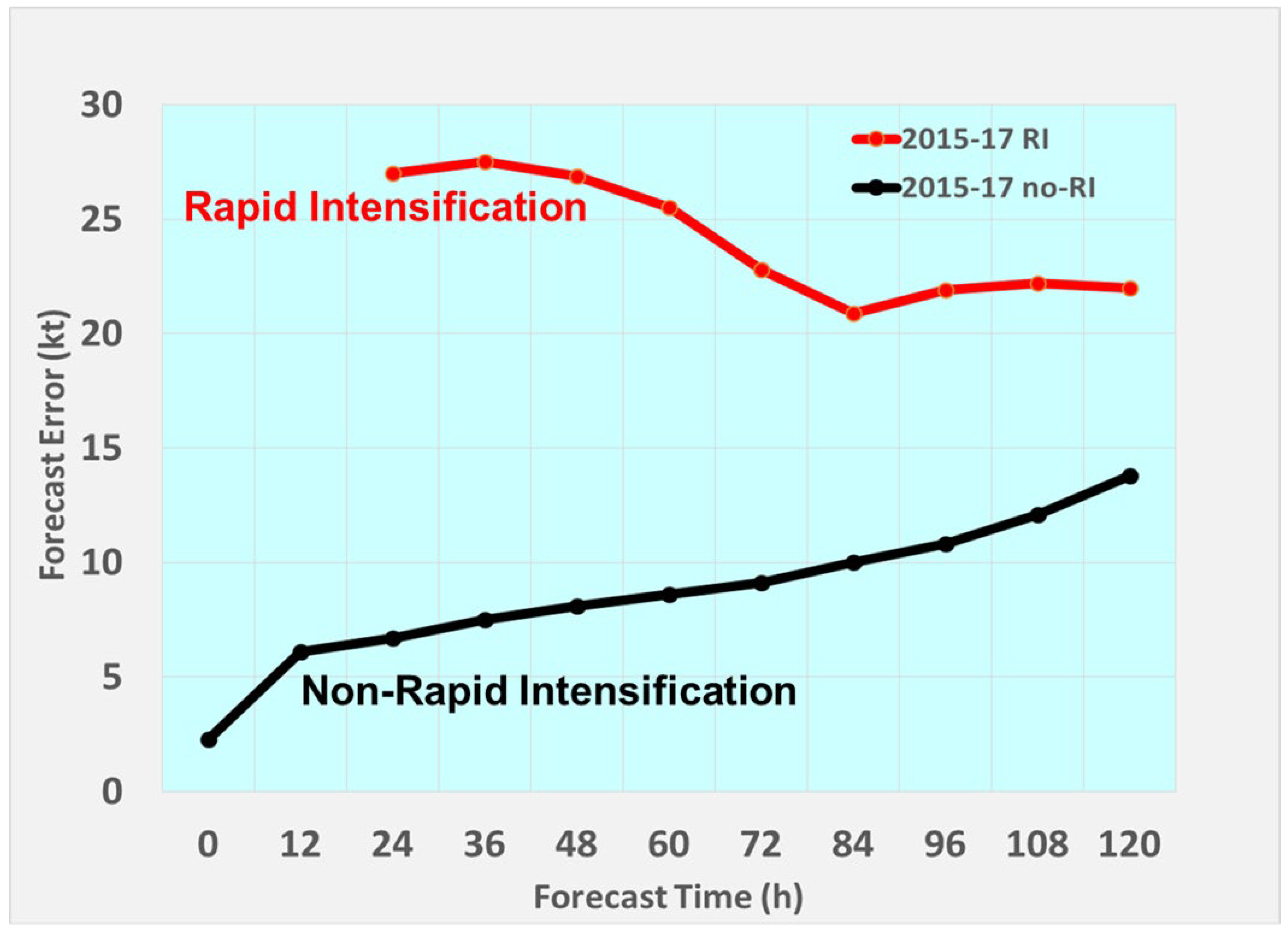
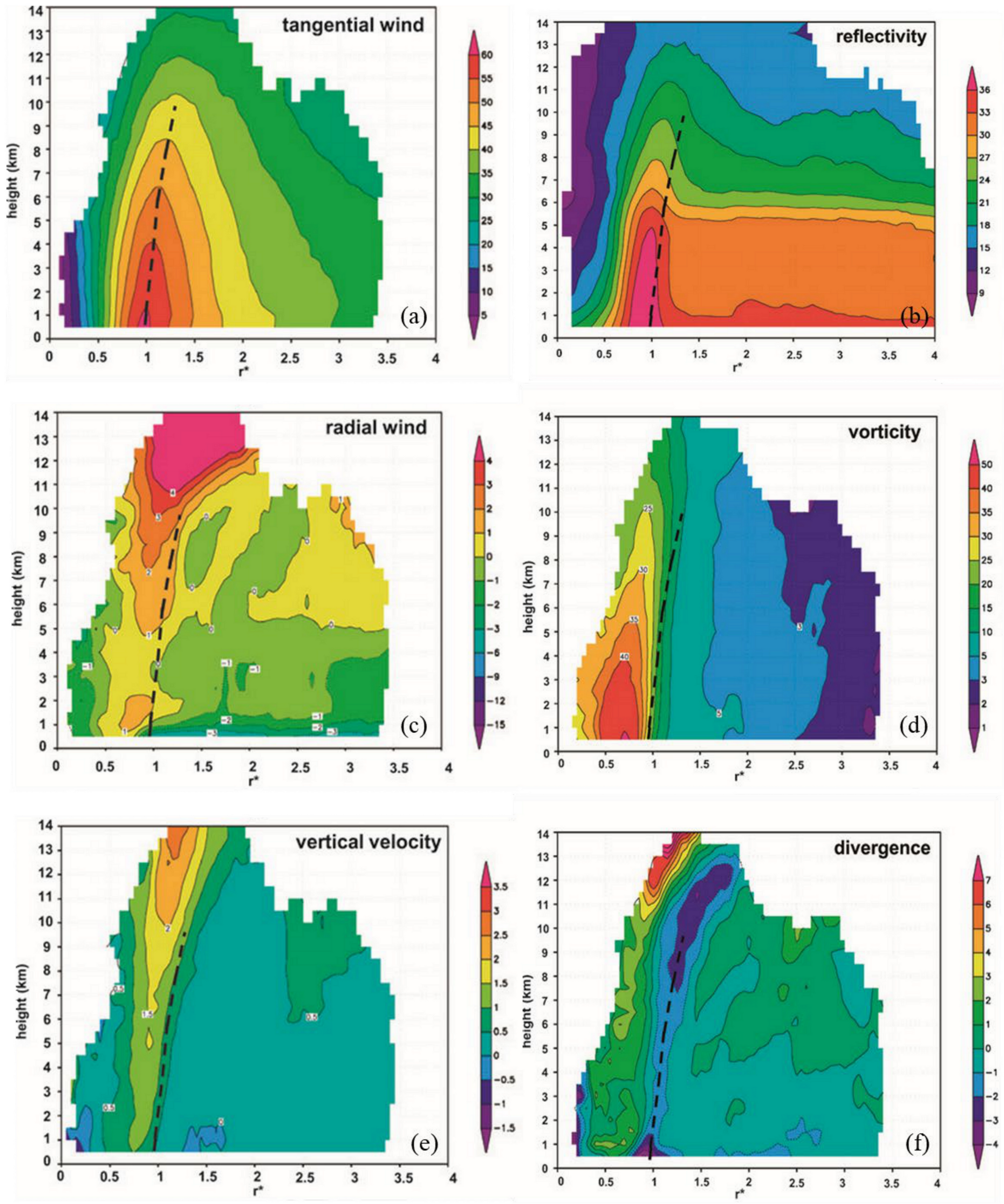

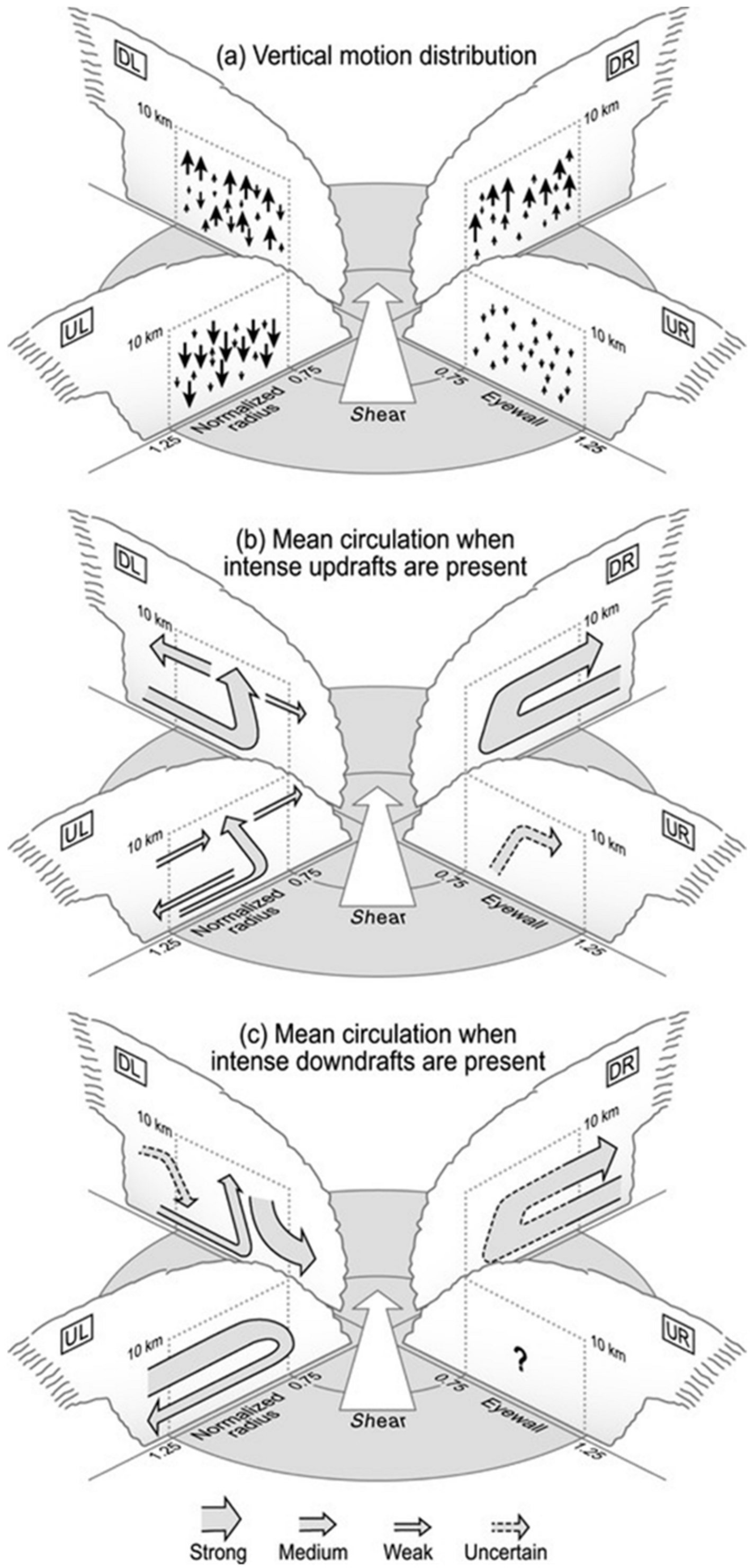




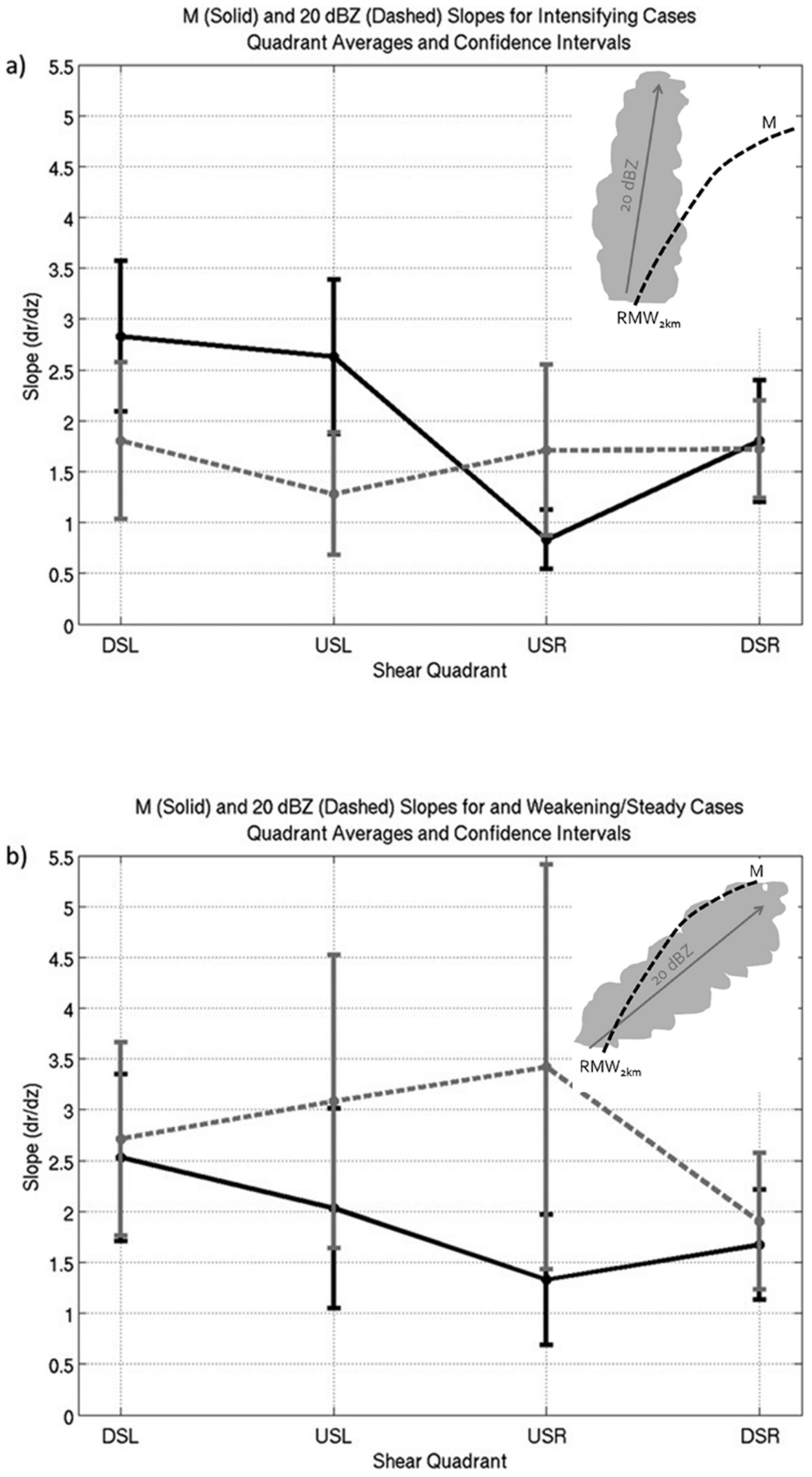


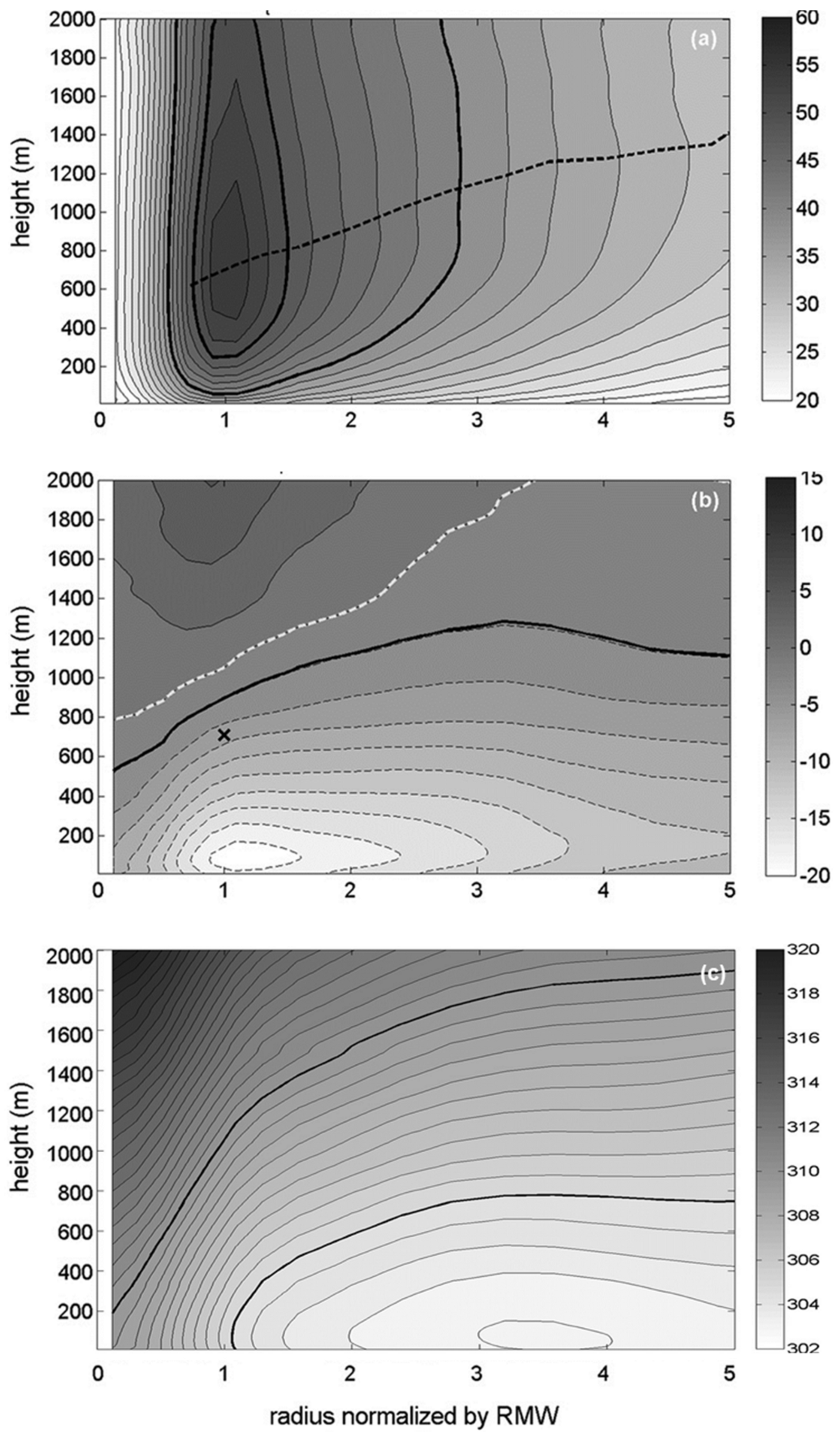




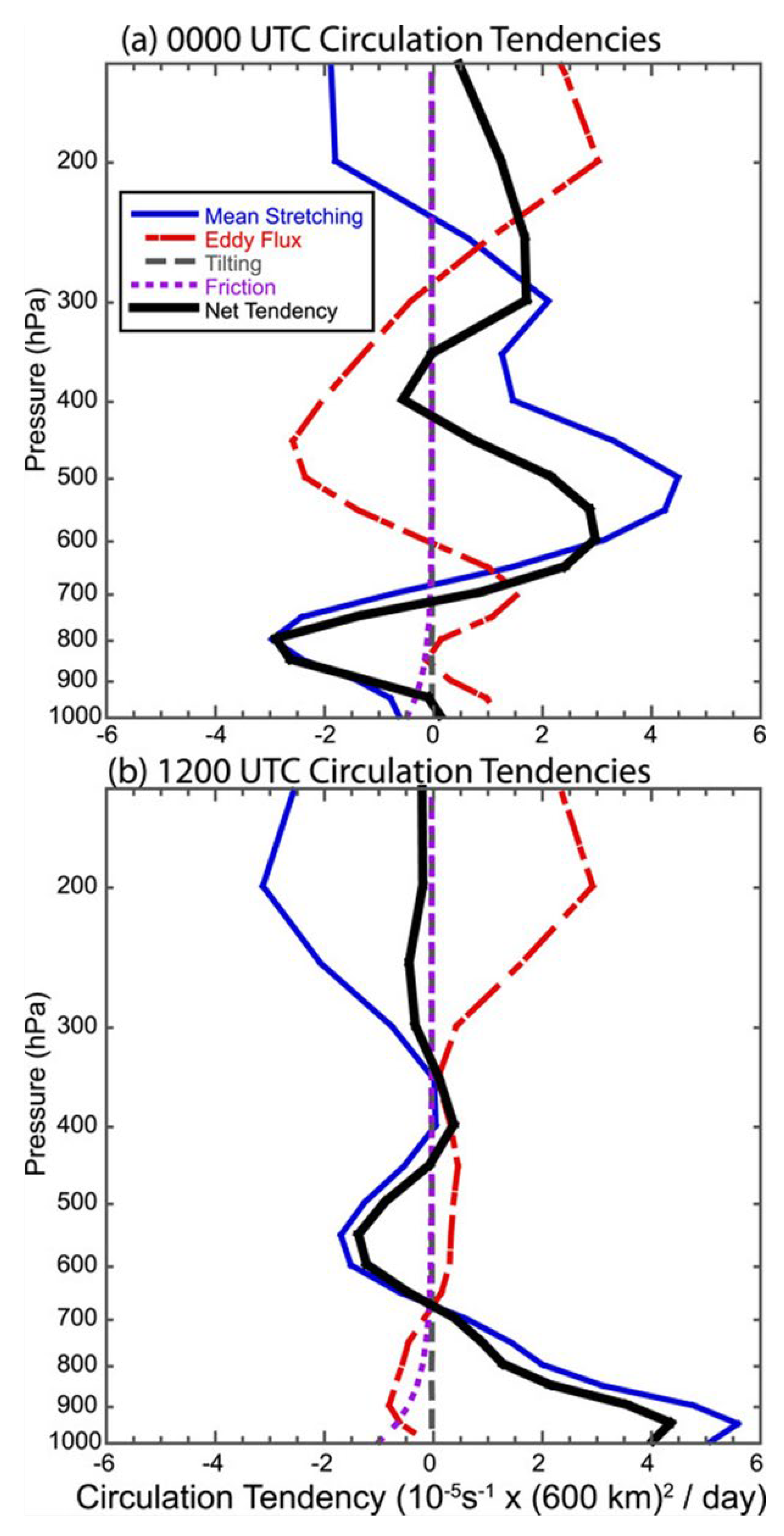

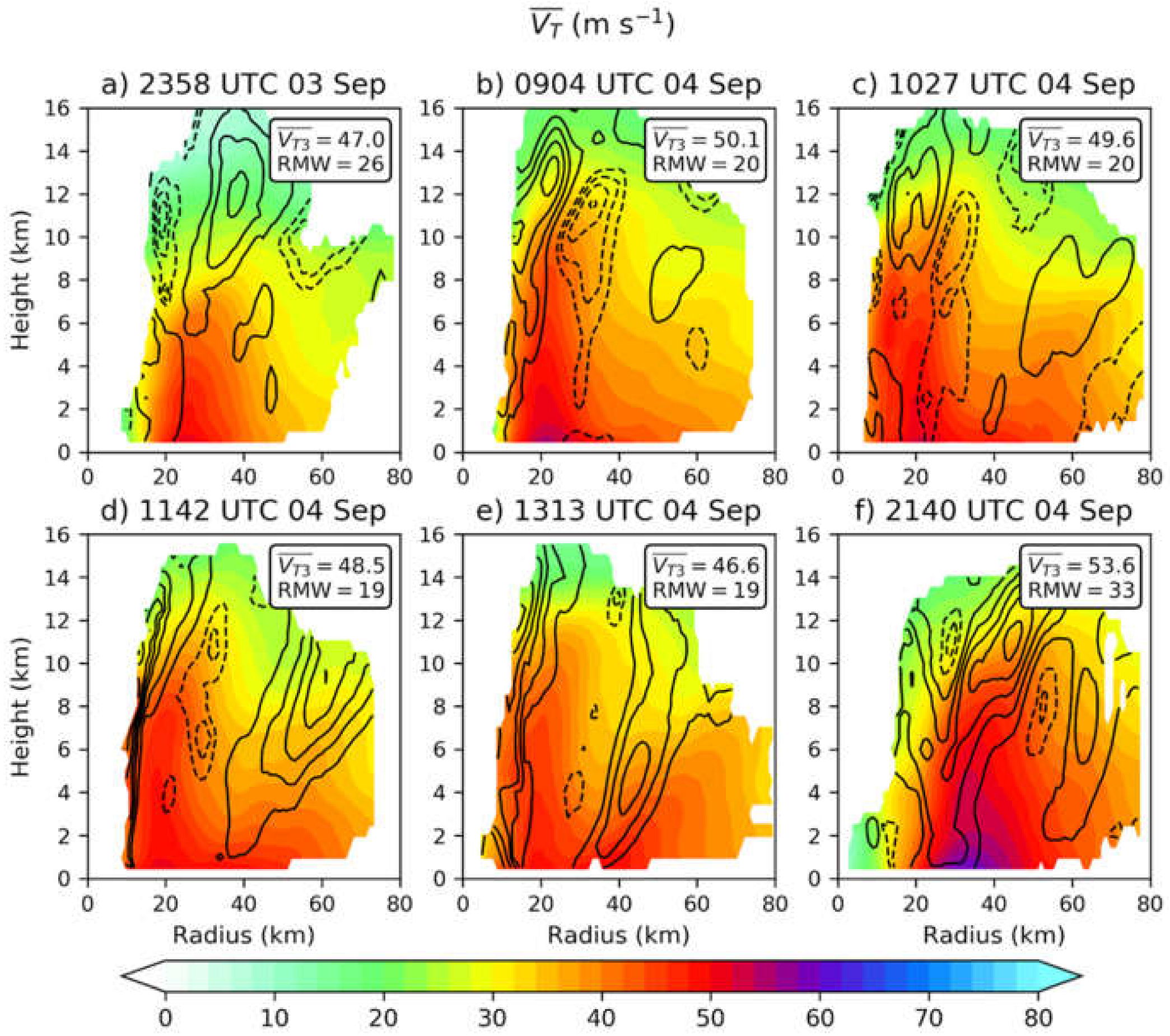
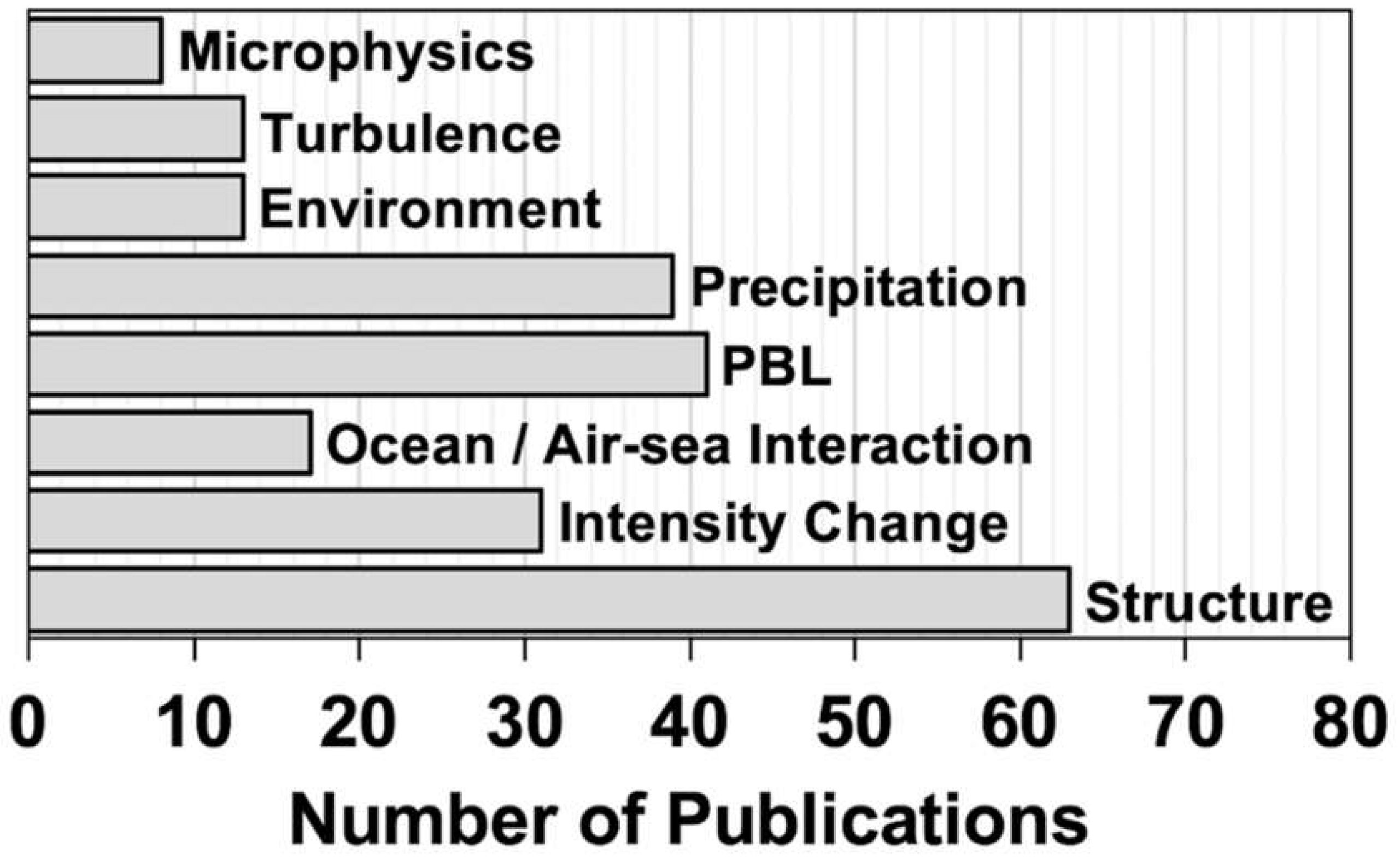
Publisher’s Note: MDPI stays neutral with regard to jurisdictional claims in published maps and institutional affiliations. |
© 2021 by the author. Licensee MDPI, Basel, Switzerland. This article is an open access article distributed under the terms and conditions of the Creative Commons Attribution (CC BY) license (https://creativecommons.org/licenses/by/4.0/).
Share and Cite
Rogers, R.F. Recent Advances in Our Understanding of Tropical Cyclone Intensity Change Processes from Airborne Observations. Atmosphere 2021, 12, 650. https://0-doi-org.brum.beds.ac.uk/10.3390/atmos12050650
Rogers RF. Recent Advances in Our Understanding of Tropical Cyclone Intensity Change Processes from Airborne Observations. Atmosphere. 2021; 12(5):650. https://0-doi-org.brum.beds.ac.uk/10.3390/atmos12050650
Chicago/Turabian StyleRogers, Robert F. 2021. "Recent Advances in Our Understanding of Tropical Cyclone Intensity Change Processes from Airborne Observations" Atmosphere 12, no. 5: 650. https://0-doi-org.brum.beds.ac.uk/10.3390/atmos12050650





